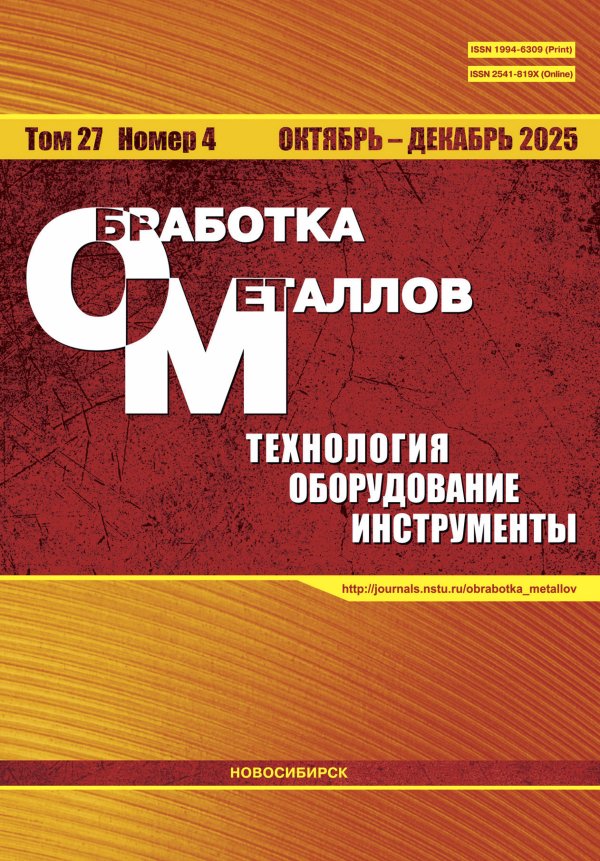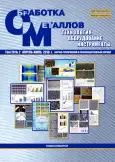Диагностирование трещин в металлических панелях по нелинейным искажениям портретов колебаний
- Авторы: Бернс В.А.1, Жуков Е.П.1, Маленкова В.В.1, Лысенко Е.А.1
-
Учреждения:
- Выпуск: Том 20, № 2 (2018)
- Страницы: 6-17
- Раздел: ТЕХНОЛОГИЯ
- URL: https://bakhtiniada.ru/1994-6309/article/view/302062
- DOI: https://doi.org/10.17212/1994-6309-2018-20.2-6-17
- ID: 302062
Цитировать
Полный текст
Аннотация
Об авторах
В. А. Бернс
Email: v.berns@yandex.ru
доктор технических наук, доцент, Новосибирский государственный технический университет, Сибирский научно-исследовательский институт авиации имени С.А. Чаплыгина, v.berns@yandex.ru
Е. П. Жуков
Email: Zh-EP@yandex.ru
Сибирский научно-исследовательский институт авиации имени С.А. Чаплыгина, Zh-EP@yandex.ru
В. В. Маленкова
Email: malenkova_vv@mail.ru
Сибирский научно-исследовательский институт авиации имени С.А. Чаплыгина, malenkova_vv@mail.ru
Е. А. Лысенко
Email: mla340@iss-reshetnev.ru
кандидат технических наук, АО «Информационные спутниковые системы» имени академика М.Ф. Решетнёва, mla340@iss-reshetnev.ru
Список литературы
- Жуков Р.В. Обзор некоторых стандартов ISO/TC-108 в области диагностики машинного оборудования // Контроль. Диагностика. – 2004. – № 12. – С. 61–66.
- Неразрушающий контроль. Т. 7, кн. 2. Вибродиагностика: справочник / Ф.Я. Балицкий, А.В. Барков, Н.А. Баркова и др. – М.: Машиностроение, 2005. – 829 с. – ISBN 5-217-03298-7.
- Костюков В.Н., Науменко А.П. Основы виброакустической диагностики и мониторинга машин: учебное пособие. – Омск: Изд-во ОмГТУ, 2011. – 360 с. – ISBN 978-5-8149-1101-8.
- Bachschmid N., Pennacchi P., Tanzi E. Cracked rotors: a survey on static and dynamic behaviour including modelling and diagnosis. – Berlin; Heidelberg: Springer-Verlag, 2010. – 408 p. – ISBN 978-3-642-01485-7.
- Tiwari R. Rotor systems: analysis and identification. – Boca Raton: CRC Press, 2017. – 1069 p. – ISBN 978-1-138-03628-4.
- Вибродиагностика авиационных конструкций. – М.: ГосНИИГА, 1986. – 95 с. – (Труды ГосНИИ ГА; вып. 256).
- Постнов В.А. Определение повреждений упругих систем путем математической обработки частотных спектров, полученных из эксперимента // Известия РАН. Механика твердого тела. – 2000. – № 6. – С. 155–160.
- Косицын А.В. Метод вибродиагностики дефектов упругих конструкций на основе анализа собственных форм колебаний // Приборы и методы измерений. – 2011. – № 2 (3). – С. 129–135.
- Damage identification and health monitoring of structural and mechanical systems from changes in their vibration characteristics: a literature review: technical report LA-13070-MS / S.W. Doebling, C.R. Farrar, M.B. Prime, D.W. Shevitz; Los Alamos National Laboratory. – Los Alamos, NM, 1996. – 132 p.
- Dilena M., Morassi А. Damage detection in discrete vibrating systems // Journal of Sound and Vibration. – 2006. – Vol. 289. – P. 830–850. – doi: 10.1016/j.jsv.2005.02.020.
- Perera R., Fang S.-E., Huerta С. Structural crack detection without updated baseline model by single and multiobjective optimization // Mechanical System and Signal Processing. – 2009. – Vol. 23, iss. 3. – P. 752–768. – doi: 10.1016/j.ymssp.2008.06.010.
- Barbieri N., Barbieri R. Study of damage in beams with different boundary conditions // International Journal of Civil, Environmental, Structural, Construction and Architectural Engineering. – 2013. – Vol. 7, N 6. – P. 399–405.
- Kessler S.S., Spearing M.S., Soutis C. Structural health monitoring in composite materials using Lamb wave methods // Smart Materials and Structures. – 2002. – Vol. 11. – P. 269–278. – doi: 10.1999/1307-6892/9351.
- Nonlinear acoustics for fatigue crack detection – experimental investigations of vibro-acoustic wave modulations / A. Klepka, W.J. Staszewski, R.B. Jenal, M. Szwedo, J. Iwaniec, T. Uhl // Structural Health Monitoring. – 2011. – Vol. 11, iss. 2. – P. 197–211. – doi: 10.1177/1475921711414236.
- Critical aspects of experimental damage detection methodologies using nonlinear vibro-ultrasonics / M. Dunna, A. Carcionea, P. Blanloeuilb, M. Veidta // Procedia Engineering. – 2017. – Vol. 188. – P. 133–140. – doi: 10.1016/j.proeng.2017.04.466.
- Бовсуновский А.П., Матвеев В.В. Вибродиагностические параметры усталостной поврежденности упругих тел // Механическая усталость металлов: труды коллоквиума. – Тернополь, 2006. – С. 212–218.
- Цыфанский С.Л., Бересневич В.И., Лушников Б.В. Нелинейная вибродиагностика машин и механизмов. – Рига: Изд-во РТУ, 2008. – 366 с. – ISBN 978-9984-32-194-3.
- Diana G., Bachschmid N., Angeli F. An on-line crack detection method for turbogenerator rotors // Proceeding of international Conference on Rotordynamics, JSME. – Tokyo, 1986. – P. 385–390.
- Контроль соосности установки отклоняемых поверхностей по результатам вибрационных испытаний / В.А. Бернс, А.П. Бобрышев, В.Л. Присекин, В.Ф. Самуйлов // Вестник МАИ. – 2008. – Т. 15, № 1. – С. 87–91.
- Способ контроля люфтов в механических проводках управления самолетов / А.П. Бобрышев, В.А. Бернс, В.Л. Присекин, А.И. Белоусов, В.Ф. Самуйлов // Полет. – 2007. – № 12. – С. 50–53.
- Al-Khazali H.A.H., Askari M.R. Geometrical and graphical representations analysis of Lissajous figures in rotor dynamic system // IOSR Journal of Engineering. – 2012. – Vol. 2 (5). – P. 971–978.
- Опыт контроля дефектов летательных аппаратов по параметрам вибраций / В.А. Бернс, Е.А. Лысенко, А.В. Долгополов, Е.П. Жуков // Известия Самарского научного центра РАН. – 2016. – Т. 18, № 4. – С. 86–96.
Дополнительные файлы







